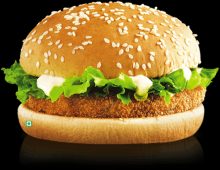As West Bengal Celebrates Rosogolla Day, We Have The Portuguese To Thank For It indianexpress.com
There are some foods that can divide us, one of them being Rosogolla. Only last year was the long drawn bitter tussle between Odisha and West Bengal regarding the origin of this signature sweetmeat put to rest, with the GI authorities in Chennai ruling in favour of Bengal. But the truth is, there might have been no Rosogolla without the Portuguese at all.
Rosogolla is made of chhana, a kind of cheese made by treating milk with citric acid and curdling it. While ancient and medieval Bengal was replete with varieties of sweets, this technique of splitting milk and making chhana was not in practice.
Quoting food writer and historian Chitra Banerji according to a report in Scroll, “It is notable that in all the myths about the young Krishna, an incarnation of Vishnu, who was bought up by foster parents among the dairy farmers of Brindaban in the state of Uttar Pradesh, there are thousands of references to milk, butter, ghee and yoghurt, but none to chhana.” While there is proof that sandesh was present in medieval Bengal, it was made out of khoa, or condensed milk solids, and not chhana.
Karbonn K2 Boom Box (Black)
990.00
698.00Buy Now
Karbonn K9 Smart Yuva (Gold)
4,999.00
3,499.00Buy Now
Because splitting of milk was taboo, it was difficult for the rosogolla to have come into existence in Bengal at the time.
Talking about Odisha’s claim to this popular sweet, the assertion rests on the fact that rosogolla was served as prasad during Rath Yatra in Puri’s Jagannath Temple. But unfortunately, there is no evidence of this.
Noted food historian K.T. Achaya tells us of Vedic proscriptions around the use of curdled milk in Hindu rituals. So it is only logical to assume that anything considered to be ill-omened and made of cheese would not be offered as prasad.
So how did the Rosogolla come into existence?
It was when the Portuguese established strong links with the region through sea routes and settled in the province that the taboo of making cheese by splitting milk might have been lifted. The Portuguese loved their fresh cottage cheese, which they made by adding citric acid to boiled milk. “This technique may have lifted the Aryan taboo on deliberate milk curdling and given the traditional Bengali moira [confectioner] a new material to work with”, writes KT Achaya.
With a new taste hitting their palate, the confectioners of Bengal started experimenting with chhana and introduced a variety of sweet treats in the market. But it is a particular gentleman Nobin Chandra Das who had a stroke of genius and boiled the chhana balls in a sugar syrup, making it softer, spongier and sweeter, and most importantly, giving it a longer shelf life.
“Nobin Chandra Das invented the sweet in 1868. He was trying to come up with a new sweet for a number of years before he came up with it. He never thought of trying for a patent on the sweet but taught confectioners how to prepare it,” Nobin Chandra Das’ great-great-grandson Dhiman Das said, according to a report by Hindustan Times.
It is worth noting that even if Das might not have come up with the original recipe of rosogolla, and there is no proof or knowledge of the person who invented the delicacy, it has been established through the years that it was Das who tweaked it and brought it to people.
But coming to think of it, without the timely influence of the Portuguese in the region of Bengal, the soft, white ball of sweet doused in sugar syrup may have not come into existence at all.









Leave Your Comment